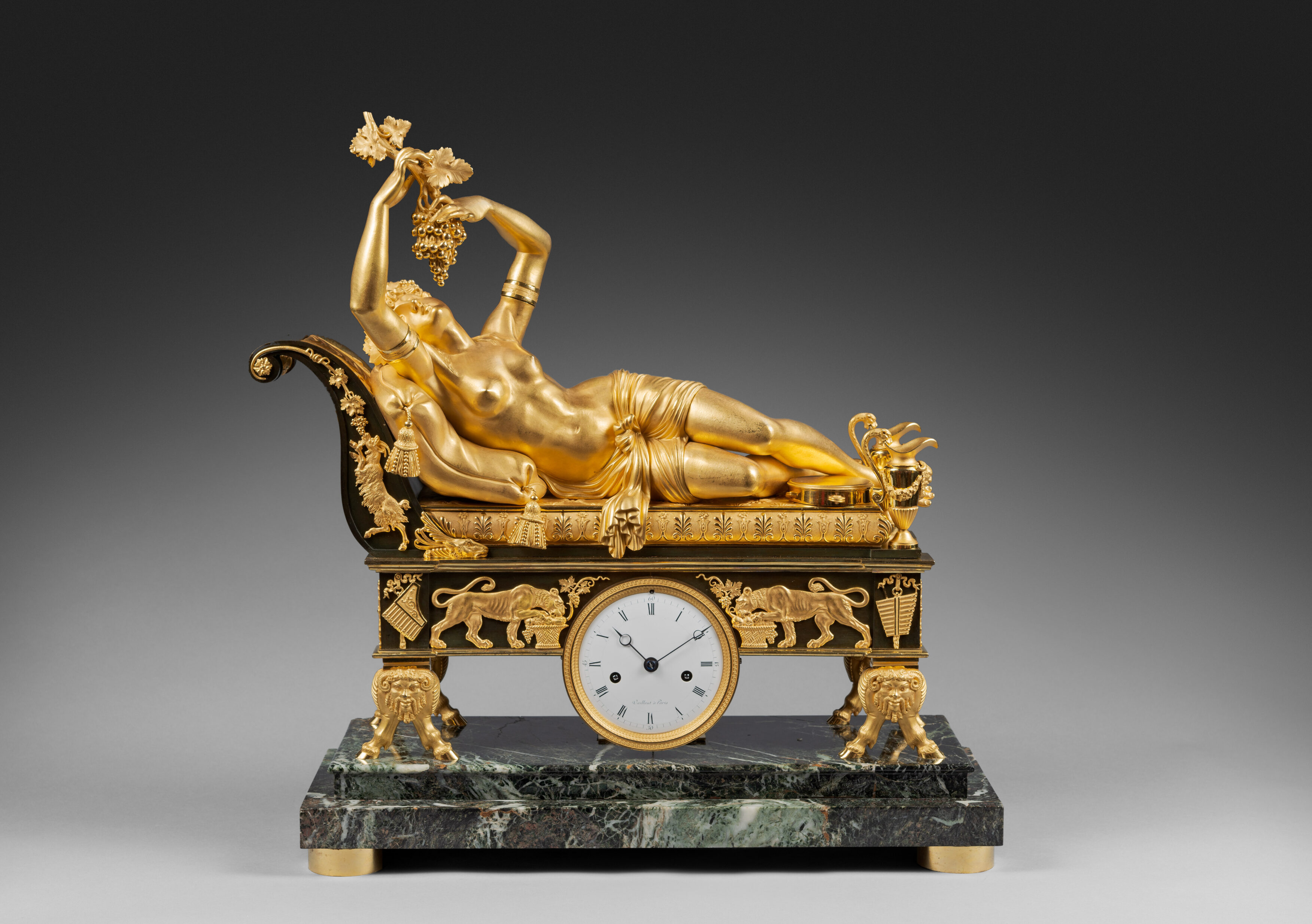Exceptional Pair of Monumental Three-Branch Quiver-Form Wall Lights in Two-Tone Gilt Bronze with Matte and Burnished Finishing
“Model from Marie-Antoinette’s Salon des jeux in the Château Royal at Compiègne”

Attributed to Pierre-Philippe Thomire and to Jean Hauré
Paris, late 18th century, circa 1790-1800
The present wall lights are made of finely chased gilt bronze with matte and burnished finishing, in two shades of gold. Each wall light features a particularly elaborate composition, presenting an arrow-filled quiver with a fluted body that is decorated with a knop with interlacing motifs centered by seeds, and whose lower portion terminates in a seed finial emerging from leaves, which is surmounted by a bouquet of alternating stylized leaves and stems. The stem of the wall light issues the three curving and be-ribboned light branches, whose spirally fluted and leaf-decorated stems terminate in rosettes. On either side, ribbon-tied garlands of flowers and foliage are suspended from a central sunflower in the upper portion of the quiver. The light branches have a reeded stem that is surmounted by bouquets of leaves to which are fixed a conical element with spiral fluting that supports the round basin whose undersides are adorned with friezes of interlacing patterns and beads, and whose circumferences are decorated with bead friezes and gadrooning. The finely chased nozzle is surmounted by a drip pan decorated with a frieze of beads.
The lavish design of the present spectacular pair of monumental wall lights is based on a model that was created for Marie-Antoinette’s Salon de Jeux in the Château de Compiègne. In 1787 the Parisian bronze caster Jean Hauré delivered six wall lights of the present model to the queen. The preliminary models, in wax and wood, were executed by Jean Martin; they were then cast by Etienne-Jean or Pierre-Auguste Forestier. Lastly, the chasing and mounting of the wall lights were done by Pierre-Philippe Thomire.
Of these three pairs, two bearing the crowned CP mark, are still in the collection of the Château de Compiègne (see the exhibition catalogue Louis XVI et Marie-Antoinette à Compiègne, Musée National du Château de Compiègne, 2006-2007, RMN, Paris p. 188-189, catalogue n° 34). The third example is today part of the Rothschild collection in Waddesdon Manor. The initial model, identified by Pierre Verlet, which was used to cast all the others, and which cost the substantial sum of 1,000 livres, was deposited in the Garde-Meuble at the time of the Revolution, probably for the purpose of casing further examples. It was no doubt this initial model that was used to produce the two pairs that are today on display in the Wallace Collection in London (illustrated in H. Jacobsen, Gilded Interiors, Parisian Luxury & the Antique, London, 2017, p. 102-104), as well as the present pair of wall lights.
Pierre-Philippe Thomire (1751 - 1843)
Pierre-Philippe Thomire was the most important Parisian bronzier of the last quarter of the 18th century and the first decades of the following century. Early on in his career he worked for Pierre Gouthière, ciseleur-fondeur du roi, and toward the mid-1770’s began working with Louis Prieur. He later became one of the bronziers attached to the Manufacture Royale de Sèvres, creating the bronze mounts for most of the important creations of the day. After the Revolution, he purchased the stock of Martin-Eloi Lignereux, thus becoming the most important suppliers of furniture bronzes for châteaux and Imperial Palaces. In addition, he worked for a wealthy private clientele, both French and foreign, including several of Napoleon’s Marshals. Thomire retired in 1823.
A Parisian bronze caster who was active from 1774 to 1796.














